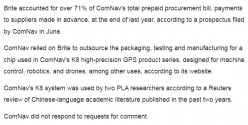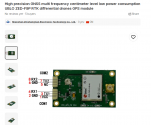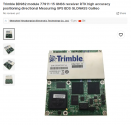
Do any of these mainstream journalists do even do the minimum research before writing stupid crap? These are CIVILIAN SPECS GNSS modules that you can find on Alibaba around 240 bucks a piece, for 200 bucks a piece they will deliver you 500 pieces right to your door ANYWHERE, INCLUDING TO THE 50 STATES OF UNITED STATES OF AMERICA.

These "PLA researchers" may as well have bought Swiss made UBLOX modules for 150 bucks for 1000 pieces or better yet 50 industrial grade trimble GNSS modules for 1600 bucks a piece.


This what happen when you let these know nothing Think Tankers take control of the narrative, because these US politicians are like 5 year olds, you have to explain them things little by little, they dont care about logic, nuance or the technical background behind the things they are legislating, they only care about the narrative, in this case "China Bad".



